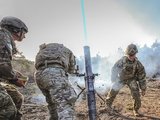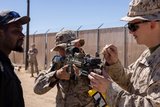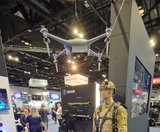Cubic tailors mortar simulator for the US Army
The company’s mortar trainer received improvements based on soldier’s feedback.
The US Air Force (USAF) is set to begin implementing a series of corrective measures to address persistent problems in the T-6 Texan II trainer aircraft.
The measures include redesigning the oxygen system and adjusting oxygen control levels in flight. Additionally, the Air Education and Training Command (AETC) will increase maintenance on the oxygen distribution system, known as OBOGS, to curb problems identified in the aircraft.
The measures come after a six-month examination of problems, namely fluctuating oxygen levels for pilots during flight. During examination, varying levels of oxygen concentrations in the cockpit was identified as the major factor in unexplained physiological events that affected T-6 pilots across AETC.
A process to redesign the T-6 OBOGS system has been initiated to stabilise the variation in the percentage of oxygen levels pilots breathe. AETC and the Air Force Material Command are also working with the aircraft manufacturer to adjust the OBOGS software algorithm to stabilise oxygen concentrations. While this will reduce the physiological events, the USAF will also pursue a broader redesign.
AETC officials are also adding study materials for T-6 pilots that will focus on identifying symptoms, responses and corrective procedures for all types of events, not just hypoxia.
The USAF will also introduce new maintenance procedures drawn from several different air force and navy T-6 bases, such as purging excess moisture from the system to keep the OBOGS operating more efficiently over time.

The company’s mortar trainer received improvements based on soldier’s feedback.

The company will operate in two new locations in the coming years to better support US services.

This type of tool provides more realistic training easing the incorporation of new scenarios that accurately represent the threats of the battlefield.

The Engineering Corps has been conducting individual instruction using FLAIM Systems’ Sweeper and should start collective deployments in 2025.

The next-generation platform is motion-compatible and can be used in OTW and NVG applications.

The system can be used to prepare soldiers for both drone offensive operations and CUAS missions.